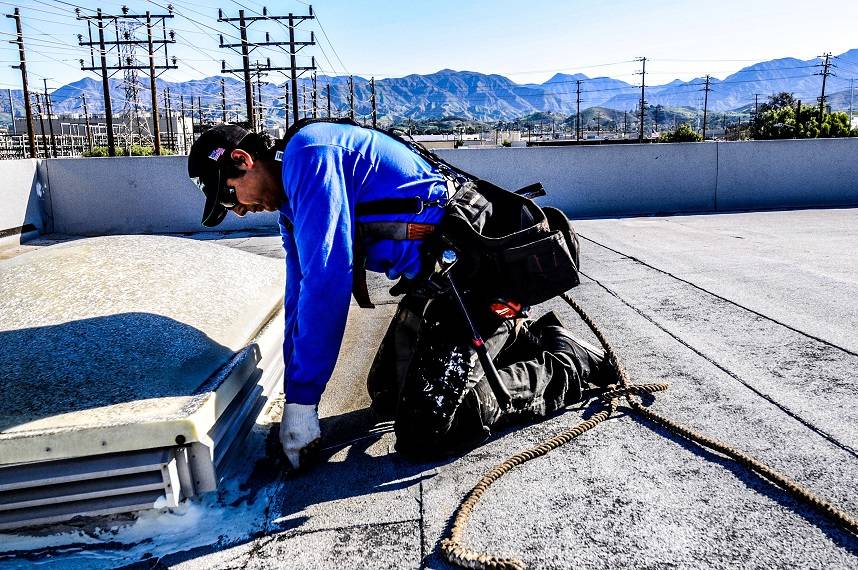Getting a new roof is not cheap in fact it’s quite the opposite. When you’re getting bids for your building and roofers are speaking using terms such as “fully adhered” or “mechanically attached”, If you’re not in the roofing industry these are not words you hear every day and it can get well, quite confusing. Here is a quick guide to what “fully-adhered” and “mechanically attached” mean.
Who is Central Roofing Company? Central Roofing has been in the commercial roofing industry for over 30 years serving Southern California. Some of our clients include See’s Candies, 20th Century Fox, and Rexford Industrial just to name a few.
Introduction
No matter which commercial roofing system you have on your building it was fastened (attached) to your building by either a fully adhered or mechanically attached. Let’s dive into adhered first.
Adhered
Adhered just means glued. So when a flat commercial roof has been “fully adhered” it means the roof is glued down to insulation boards below it. The insulation boards serve a dual role of providing insulation and
securing the roof using screws. Then the final layer of glue and roofing material is added on top to create a
waterproof seal.
ADHERED ROOFING ADVANTAGES:
Some advantages of adhering a roof are as follows:
An adhered can be installed without penetrating the membrane.
This method secures the membrane across the entire roofing assembly.
Easier to service in the event of a leak.
Provide a better wind uplift rating with fewer seams.
ADHERED ROOFING DISADVANTAGES:
Some disadvantages of fully adhered commercial roofs:
More expensive to install.
Adhesives produce a very foul smell during installation.
Since the membrane is only glued to the paper face of the insulation, if the insulation face begins to peel up,
or any wind gets under the system, fully adhered commercial roofs can peal up and blow off.
Mechanically Attached
Nearly 80% of commercial roofs are mechanically attached. First, a membrane is laid down, then screws are driven directly into the insulation boards into the metal deck below. The screws are strategically placed so that the next layer of membrane covers the edge of the next sheet and the screws. A watertight seal is created by heat-welding the membranes together.
MECHANICALLY ATTACHED ADVANTAGES:
Some advantages of mechanically attached commercial roofs are:
Roofing rarely fails over time.
There are no foul smells when installing.
Ability to improve wind ratings.
Less expensive to install.
MECHANICALLY ATTACHED DISADVANTAGES:
And some Disadvantages:
More perforations mean more chances for leaks.
Penetration of fasteners can hit conduit systems on the deck, like lighting systems.
CONCLUSION
Both methods have their pros and cons so whether you choose an adhered system or a mechanically attached system for your commercial roof the most important aspect of all is that it is installed correctly.
[simple-author-box]
![2 Roofing Terms You Should Be Aware Of [2022] 1 Adhered Roofing](https://centralroof.com/wp-content/uploads/2022/06/adhered.png)
![2 Roofing Terms You Should Be Aware Of [2022] 2 Mechanically Atttached Roofing](https://centralroof.com/wp-content/uploads/2022/06/Mechanically-Attached-Roofing-Systems-e1586803555285.jpg)
